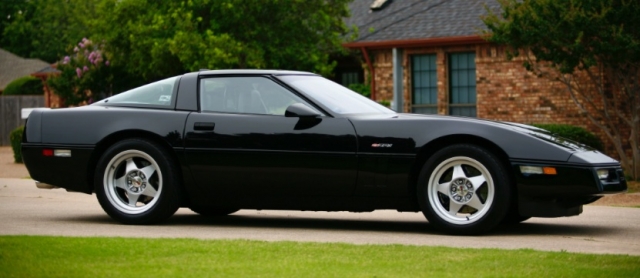CHEVY HARDCORE
@ chevyhardcore.com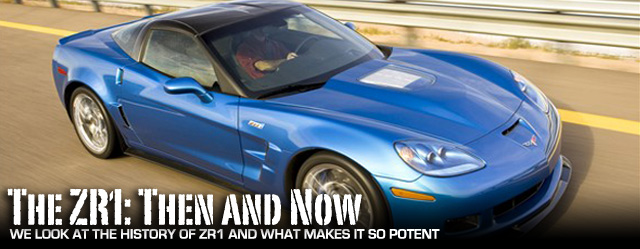
In the horsepower wars of the last decade, American manufacturers have been in a constant state of trying to one up each other with their premier vehicles. Between the Dodge Viper, Ford Shelby GT500, and the iconic Corvette, car enthusiasts have had quite the selection when going out and choosing a performance car to purchase.
With the release of the LS7 powered Chevrolet Corvette Z06 in 2006, it seemed that the horsepower war was finally over and GM had put the nail in the coffin on the competition. While the Z06 was a performance monster at the time and had the capability of taking on some of the worlds most expensive super cars, what the general public did not know is that GM was not resting on their laurels and were secretly working on an even more powerful Corvette – The C6 ZR1.

From 1970-1972, Chevrolet introduced the “ZR1″ monicker which was a special engine and build package included on the then-current C3 generation Corvettes. The ZR1 build package was a race inspired package that deleted creature comforts like power windows, power steering, a radio, wheel covers, and air conditioning. The $1,221 ZR1 package was built exclusively with the LT1 engine, an engine featuring solid lifters, aluminum radiator, and other differentiating features that complimented the small-block very well.

At this time in history, some high end features were reserved specifically for special build-code vehicles like the ZR1. For instance, the 1970-1972 C3 ZR1 featured options like a heavy duty four-speed transmission, power brakes, special springs and shocks, and a heavy duty stabilizer bar. With only 53 ZR1’s built during this time period, they have become one of the most rare Corvettes for collectors to come by.
Years after the C3 ZR1 was discontinued, GM wanted to do it all over again on the C4, but this time with help. Having acquired Lotus, a performance car manufacturing and engineering consulting firm from the UK in 1986, they wanted to team up to build the world’s fasted production car of the time. In order to do this, they needed a newly revised version of the L98 V8 engine that was being used in the standard C4 Corvettes of the time.
With help from Lotus, GM took the L98 and created the LT5, which was a 32 valve version of the L98 and produced 375 hp, an astonishing number for the time.
While the L98 and LT5 shared the same bore centers, they added four overhead cams as well as an active air management system that yielded a wider power band by shutting off half of the 16 intake runners and fuel injectors when the motor was at half throttle.
Even with these advancements, GM and Lotus were still able to yield the 375 hp figure.
The problem with this motor however, was that GM had nowhere to build it since it required special assembly. To overcome this obstacle, GM contracted Mercury Marine corporation of Stillwater, Oklahoma and had the motors shipped directly to the Bowling Green, Kentucky assembly plant where the ZR1 was being produced.
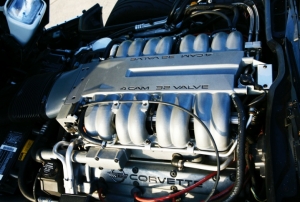
Codenamed the “King of the Hill” during the development cycle, GM and Lotus wanted to build a vehicle that would not be seen only as a muscle car.
On the contrary, their vision was to produce a vehicle that was a modern day track car that had real capabilities to take on some of the biggest players of the time – like the Porsche 964.
In order to accomplish this, engineers equipped the ZR1 with a heavily upgraded braking and steering system and used input from Lotus to select the active ride control settings that were beyond the standard system of the time.
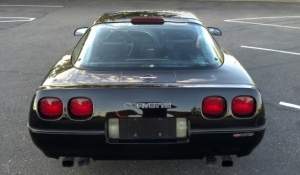
To further distinguish the ZR1 from other Corvettes, eleven-inch-wide rear wheels were fitted along with, four square taillights, a wider tail section, and a rear brake light that was mounted high up on the hatch glass. These features helped puzzled onlookers know what vehicle blasted by them on the highway considering it had a top speed of 180+ mph and a 0-60 rating of 4.4 seconds.
All of these features helped differentiate the ZR1 and allowed the vehicle to have tremendous acceleration and handling characteristics. When the vehicle went on sale in 1990, it did so with an MSRP of $58,995– quite the sum of money for the time considering a standard Corvette had nearly half the sticker price. Sold from 1990-1995, the ZR1 went through some puzzling changes over the years.
For instance, in the 1991 model year, GM decided to use the ZR1-specific rear fascia on all Corvettes– an interesting decision considering they had previously worked vigorously to distinguish it from the standard Corvette in the 1990 unveiling.

Early 90s Porsche 964 – The ZR1’s main competitor based on price
With impending emissions regulations, changes were made to the exhaust system in 1993 and in addition, changes were made to the LT5’s cylinder heads which bumped the horsepower rating up to 405, 30 more horsepower than before.
Over the course of the C4 ZR1’s availability, changes to the motor and visual cues were not the only things that changed. While the power ratings went up, so did the price– all the way up to $66,278 by the 1995 model year.
Considering the vehicle was limited in production numbers (6,939 units to be exact) and had power figures that rivaled some of the worlds best at the time, some dealers were able to mark them up an additional $25,000 over sticker– a contributing factor to the eventual decreased sales numbers and discontinuation of the car.
The Blue Devil

General Motors
After the success of the C5 Corvette, GM introduced the C6 Corvette that was met with even more acclaim from critics.
The C6 was met with open arms in 2004 for the improvements over previous generations, and by the time the C6 Z06 Corvette came out as a 2006 model, Corvette enthusiasts thought they had hit the lottery.
What they didn’t know however, was that GM was working on a project codenamed “The Blue Devil” that was going to be even faster than the Z06 and would end up being the fastest production Corvette to date.
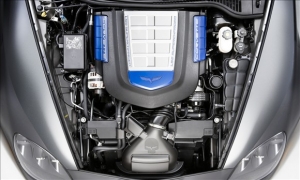
The Small Block LS9 General Motors
Introduced as a 2009 model, the C6 ZR1 featured a supercharged LS9 engine that produced a staggering 638 hp and 604 lb-ft of torque.
Based on the LS3 Corvette engine that featured a smaller bore than the Z06’s LS7, the LS9 featured aluminum heads, titanium rods and valves, and four-lobe Eaton TVS R2300 root supercharger. Strangely enough, the camshaft lift was reduced over the LS7 motor as it was no longer a necessity to achieve the performance numbers GM wanted.
To cool the motor, a 10.5 quart dry sump oil system was used, a variation of the LS7’s system, and was combined with Behr intercoolers. To put the power to the ground, the LS9 was mated to a Tremec TR-6060 transmission, a nine-bolt flywheel, and a limited slip differential made of carbon and steel plates.
With all the available power on tap, GM had to use 335/25R20 Michelin Pilot Sport PS2 tires which were the largest ever mounted on a production Corvette.
With all of these innovations, the ZR1 only weighed 3,414 pounds which created a wicked power to weight ratio. High-end materials were found throughout the ZR1 as GM used carbon ceramic brake rotors front and rear with six-piston Brembos up front and four-piston Brembos in the back.
These brakes that featured twice the contact area of those found on the Z06, were able to stop a ZR1 traveling at 60 mph in an astonishing, and record setting, 96 feet.

Carbon Ceramic Rotors with Brembo Calipers. General Motors
Identified by blue badges, brake calipers, and fuel rail covers (hence the Blue Devil moniker), the C6 ZR1 was the fastest and most potent package GM had ever offered to the general public.
Receiving the 2009 Performance Car of the Year award by Top Gear, and a handful of other awards, the C6 ZR1, featuring a larger rear spoiler and two horizontal fender vents, put GM back on top of the proverbial performance mountain.
With a top speed of 205 mph and 0-60 times of 3.1 seconds, the C6 ZR1 not only outdid the competitors, but it also outdid previous generations of ZR1s.
The C4 and C6 Generations: Head to Head
With the C6 ZR1 having a starting price of over $111,000 and the C4 ZR1’s price right around the $60,000 mark, it is clear that both vehicles were aimed at an affluent yet performance-minded demographic.
With only 2,000 C6’s produced compared to the 6,900+ units of the C4, the C6 is destined to be a collectors item going forward.
While both vehicles stand on their own as being iconic Corvettes, the limited production of the C6 ZR1 combined with excessive power figures and a very high asking price all combine to make the C6 version a timeless super car– something that even the C3 and C4 generations cannot compete with.
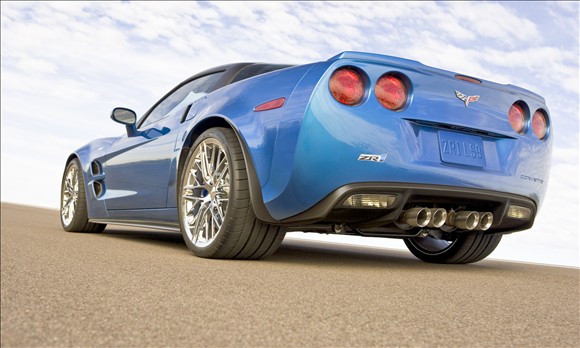
Technology, improved development processes, and greater competition helped GM reach new heights with the C6 ZR1. Now that the C7 has been released, GM has an entirely new chassis with an even stronger baseline to build off of for future performance cars.
With the cloud of secrecy that engulfed the development of the C4 and C6 ZR1s, who knows what GM currently has in development and whether or not the ZR1 moniker will ever be used again– we can only hope.

